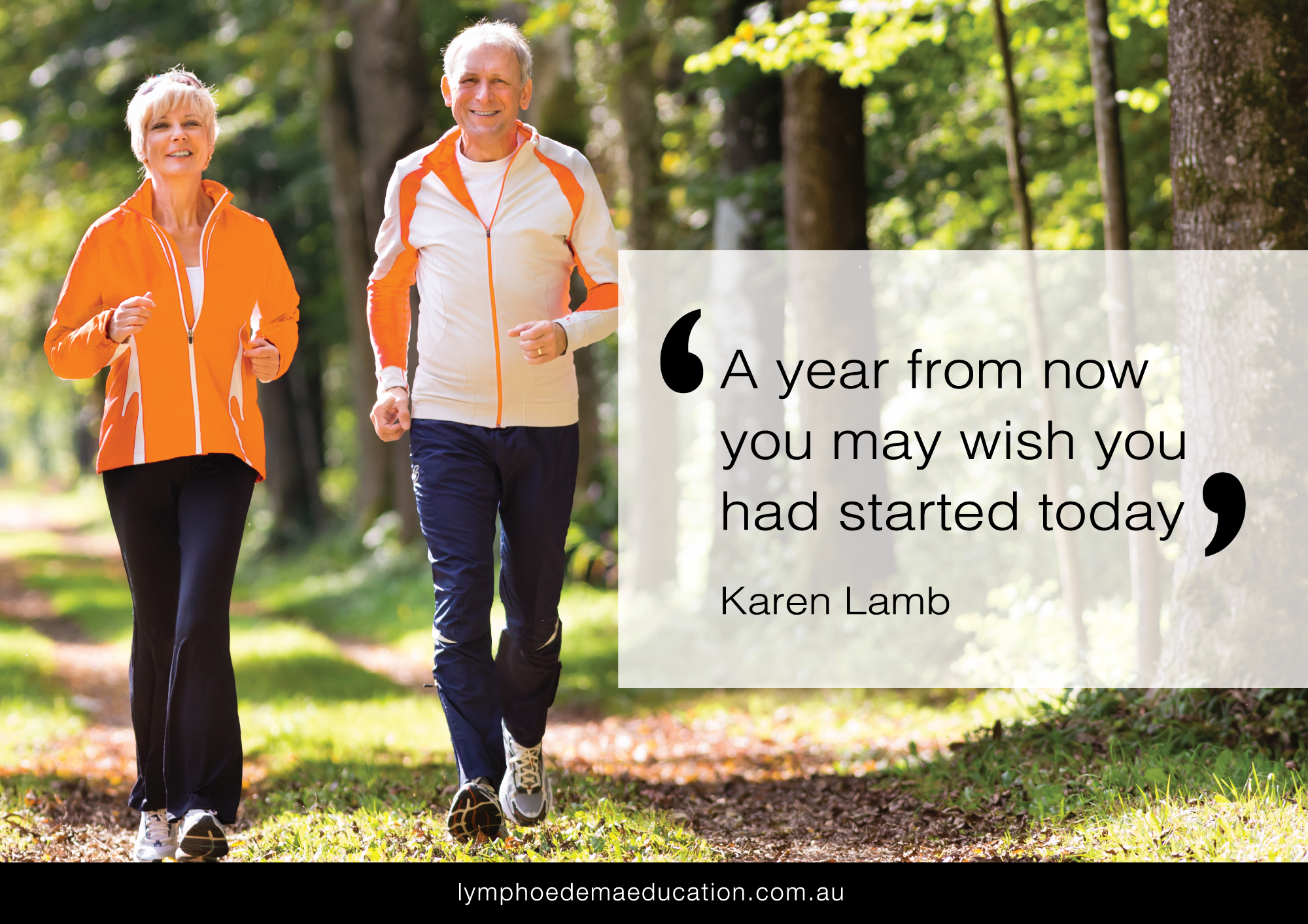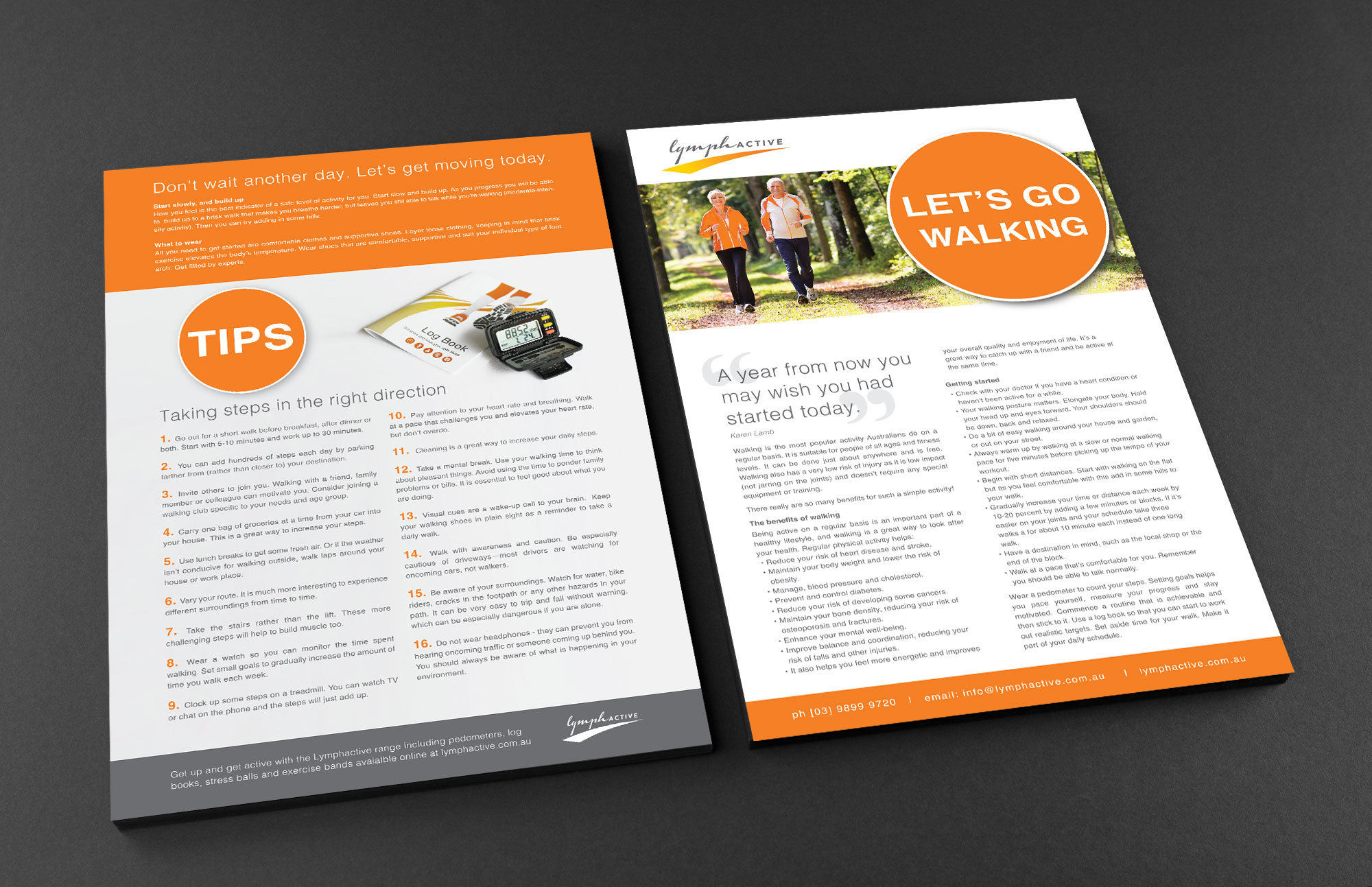Staying Active – Let’s Go Walking

Walking is the most popular activity Australians do on a regular basis. It is suitable for people of all ages and fitness levels. It can be done just about anywhere and is free. Walking also has a very low risk of injury as it is low impact (not jarring on the joints) and doesn’t require any special equipment or training.
The benefits of walking
Being active on a regular basis is an important part of a healthy lifestyle, and walking is a great way to look after your health. Regular physical activity helps:
- Reduce your risk of heart disease and stroke
- Maintain your body weight and lower the risk of obesity
- Manage, blood pressure and cholesterol
- Prevent and control diabetes
- Reduce your risk of developing some cancers
- Maintain your bone density, reducing your risk of osteoporosis and fractures
- Enhance your mental well-being
- Improve balance and coordination, reducing your risk of falls and other injuries
It also helps you feel more energetic and improves your overall quality and enjoyment of life. It’s a great way to catch up with a friend and be active at the same time.
There really are so many benefits for such a simple activity!
Start slowly, and build up
How you feel is the best indicator of a safe level of activity for you. Start slow and build up.
As you progress you will be able to build up to a brisk walk that makes you breathe harder, but leaves you still able to talk while you’re walking (moderate-intensity activity). Then you can try adding in some hills.
Getting started
- Check with your doctor if you have a heart condition or haven’t been active for a while.
- Your walking posture matters. Elongate your body. Hold your head up and eyes forward. Your shoulders should be down, back and relaxed.
- Do a bit of easy walking around your house and garden, or out on your street.
- Always warm up by walking at a slow or normal walking pace for five minutes before picking up the tempo of your workout.
- Begin with short distances. Start with walking on the flat but as you feel comfortable with this add in some hills to your walk.
- Gradually increase your time or distance each week by 10-20 percent by adding a few minutes or blocks. If it’s easier on your joints and your schedule take three walks a for about 10 minute each instead of one long walk.
- Have a destination in mind, such as the local shop or the end of the block.
- Walk at a pace that’s comfortable for you. Remember you should be able to talk normally.
Wear a pedometer to count your steps. Setting goals helps you pace yourself, measure your progress and stay motivated. Commence a routine that is achievable and then stick to it. Use a log book so that you can start to work out realistic targets. Set aside time for your walk. Make it part of your daily schedule.
What to wear
All you need to get started are comfortable clothes and supportive shoes. Layer loose clothing, keeping in mind that brisk exercise elevates the body’s temperature. Wear shoes that are comfortable, supportive and suit your individual type of foot arch. Get fitted by experts.
Some extra tips…
- Go out for a short walk before breakfast, after dinner or both. Start with 5-10 minutes and work up to 30 minutes.
- You can add hundreds of steps each day by parking farther from (rather than closer to) entrances.
- Invite others to join you. Walking with a friend, family member or colleague can motivate you. Consider joining a walking club specific to your needs and age group.
- Carry one bag of groceries at a time from your car into your house. This is a great way to increase your steps.
- Use lunch breaks to get some fresh air. Or if the weather isn’t conducive for walking outside, walk laps around your house or work place.
- Vary your route. It is much more interesting to experience different surroundings from time to time.
- Take the stairs rather than the lift. These more challenging steps will help to build muscle too.
- Wear a watch so you can monitor the time spent walking. Set small goals to gradually increase the amount of time you walk each week
- Clock up some steps on a treadmill. You can watch TV or chat on the phone and the steps will just add up.
- Pay attention to your heart rate and breathing. Walk at a pace that challenges you and elevates your heart rate, but don’t overdo.
- Cleaning is a great way to increase your daily steps.
- Take a mental break. Use your walking time to think about pleasant things. Avoid using the time to ponder family problems or bills. It is essential to feel good about what you are doing.
- Visual cues are a wake-up call to your brain. Keep your walking shoes in plain sight as a reminder to take a daily walk.
- Walk with awareness and caution. Be especially cautious of driveways—most drivers are watching for oncoming cars, not walkers.
- Be aware of your surroundings. Watch for water, bike riders, cracks in the footpath or any other hazards in your path. It can be very easy to trip and fall without warning, which can be especially dangerous if you are alone.
- Do not wear headphones—they can prevent you from hearing oncoming traffic or someone coming up behind you. You should always be aware of what is happening in your environment.

“An early-morning walk is a blessing for the whole day.” – Henry David Thoreau
Conclusion
Developing positive habits takes sustained effort but as mentioned above, there are many ways to motivate you to go for a walk. Make walking a fun, easy experience for you to keep up your motivation levels.
If you feel unwell or experience foot, knee, hip or back pain when walking, STOP and check with your doctor to find out the cause.



